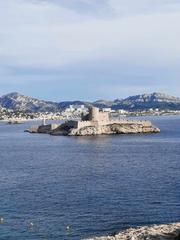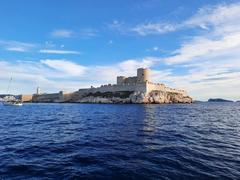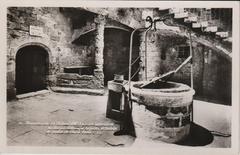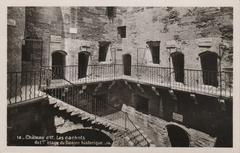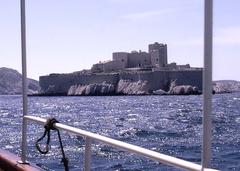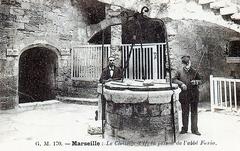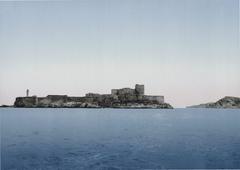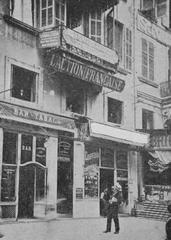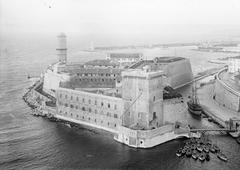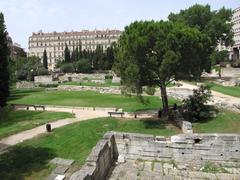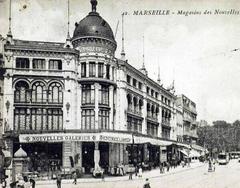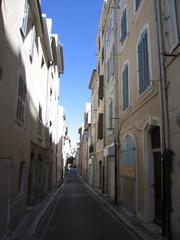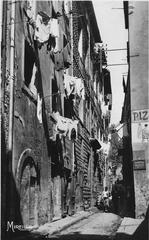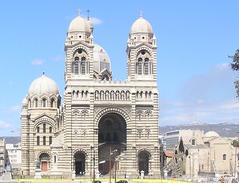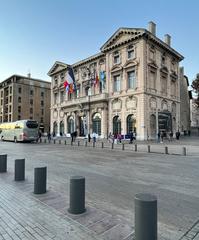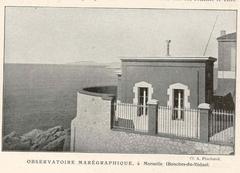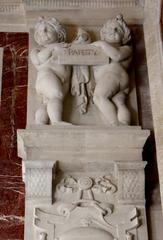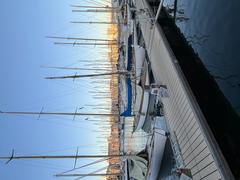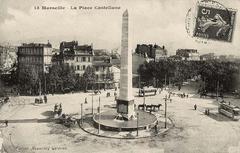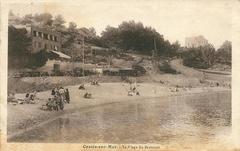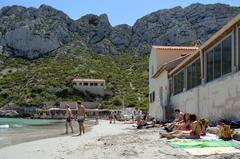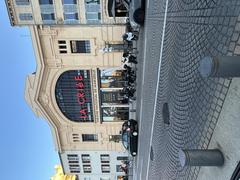
Visiting Château d’If, Marseille, France: Complete Guide (Tickets, Hours, History & Tips)
Date: 14/06/2025
Introduction: Why Visit Château d’If?
Château d’If, perched on the smallest island in the Frioul archipelago just 1.5 kilometers off Marseille’s coast, is a legendary French monument that fuses history, architecture, and literary fame. Originally built as a fortress to defend Marseille, it later gained notoriety as a state prison and became immortalized in Alexandre Dumas’s The Count of Monte Cristo. Today, this striking fortress welcomes thousands of visitors each year who come to explore its medieval ramparts, prison cells, and stunning Mediterranean views. This guide provides everything you need to plan a visit, from practical travel tips and ticketing information to historical background and nearby attractions (chateau-if.fr, marseille-tourisme.com, Thrillophilia).
Table of Contents
- Historical Overview
- Château d’If in Literature & Culture
- Visitor Information
- Practical Tips & Recommendations
- Frequently Asked Questions (FAQ)
- Summary & Travel Recommendations
- References
Historical Overview
Origins & Construction
Château d’If was commissioned by King Francis I following his 1516 visit to Marseille, who recognized the city’s vulnerability to naval attack. Construction began in 1528 and finished in 1531, with the fortress strategically positioned to command the entrance to Marseille’s vital port (chateau-if.fr, marseille-tourisme.com). Built from robust limestone, its design is typical of late-medieval military architecture, featuring a square keep, three towers, thick ramparts up to three meters, a moat, and a drawbridge. Locals, wary of royal authority after Marseille’s recent annexation by France, dubbed it “la Malvoisine” (“the bad neighbor”) (culturezvous.com).
Military & Political Role
Though intended as a deterrent against foreign invasion and local rebellion, the fortress never saw actual combat. Its formidable presence and heavy artillery were enough to discourage would-be aggressors. Château d’If also served as a base for royal galleys and a symbol of the French crown’s control over Marseille (marseille-tourisme.fr).
Prison Era
Shortly after its completion, Château d’If became notorious as a state prison. Its isolation and treacherous surrounding waters made it virtually escape-proof. From 1540 onwards, it housed a range of prisoners—political dissidents, Huguenots (Protestants) after the revocation of the Edict of Nantes, revolutionaries, and common criminals (worldofhistorycheatsheet.com). Conditions were harsh and deeply stratified: the poor languished in dark, damp cells, while wealthier inmates could pay for relative comfort. Inmates left behind graffiti and inscriptions that still mark the walls today (marseille-tourisme.fr).
Decline & Preservation
By the late 19th century, Château d’If ceased functioning as a prison and opened to the public in 1890. It was classified as a historic monument in 1926 and is now managed by the Centre des monuments nationaux. During World War II, the site was occupied by German troops but survived largely intact (Wikipedia).
Château d’If in Literature & Culture
The site’s global fame comes largely from Alexandre Dumas’s 1844 novel, The Count of Monte Cristo, in which the protagonist Edmond Dantès is wrongfully imprisoned in the fortress. Dumas’s gripping tale of injustice, hope, and escape transformed Château d’If into a symbol of resilience and poetic justice, inspiring countless film and stage adaptations (LitCharts, Thrillophilia). Today, the fictional cell of Edmond Dantès is a pilgrimage site for literature fans, and the fortress remains an essential part of Marseille’s identity and cultural life.
Visitor Information
Ferry Access & Getting There
Château d’If is only reachable by ferry, with regular departures from Marseille’s Vieux-Port (Old Port). The crossing takes about 20–30 minutes and offers panoramic views of the sea and city (A Well Read Wanderer, France Travel Tips). Two main companies operate the route: Le Bateau Frioul If Express and Croisières Marseille Calanques. Tickets are available online or at the port, but buying in person allows flexibility for weather-related changes.
Directions from Marseille Provence Airport: Take the L091 bus to Gare Saint-Charles, then the Metro Line M1 or a short walk to the Vieux-Port (A Well Read Wanderer).
Weather Note: Ferry schedules depend on sea conditions and may be canceled in rough weather—always check updates before visiting (France Travel Tips).
Tickets & Admission
- Ferry Ticket: €11–12 per adult (round-trip), sold separately from château admission.
- Château d’If Entry: €6 per adult; discounts available for groups and eligible visitors. Children under 18, EU residents under 26, and disabled visitors with companions may enter free (Marseille Tourisme).
- Combined Offers: The Marseille CityPass includes entry and ferry travel, plus other attractions (chateau-if.fr).
- Group Rates: Available for groups of 20+ with advance booking.
Visiting Hours
- April 1 – September 30: 10:00 a.m. – 6:00 p.m.
- October 1 – March 31: 10:00 a.m. – 5:15 p.m.
- Closed: Mondays outside peak season, January 1, May 1, December 25, and during adverse weather or special events (chateau-if.fr).
Note: Visits are only possible when ferries are running.
Accessibility
- Ferry: Wheelchair accessible; check with operators for electric wheelchair compatibility (Travel Setu).
- On Site: The château’s historic structure has uneven terrain, narrow spiral staircases, and limited access to upper levels. Some ground-floor areas are accessible, but visitors with reduced mobility should contact staff ahead of time for assistance (chateau-if.fr).
Guided Tours & Events
- Multilingual guided tours are available, including themed tours focused on The Count of Monte Cristo.
- Literary readings, historical reenactments, and art exhibitions are held throughout the year—check the official website for schedules (Thrillophilia).
Facilities & Photography
- Restrooms: Available on the island.
- Food: A small café operates seasonally; otherwise, bring snacks and water.
- Gift Shop: Offers books and souvenirs, including editions of Dumas’s novel (A Well Read Wanderer).
- Photography: Permitted throughout. The ramparts and rooftop provide excellent panoramic shots of Marseille and the Mediterranean (France Travel Tips).
Nearby Attractions
- Frioul Islands: Combine your visit with a hike or beach outing on Pomègues or Ratonneau.
- Marseille Highlights: Explore the Old Port, Le Panier district, MuCEM, and Notre-Dame de la Garde (Travel Setu, Tourist Platform).
Practical Tips & Recommendations
- Best Time to Visit: Early morning or late afternoon for fewer crowds and better light. Spring and autumn offer mild weather.
- Footwear: Wear comfortable shoes for uneven surfaces and stairs.
- Weather Prep: Bring sunscreen, a hat, and a light jacket (the island can be windy and exposed).
- Duration: Plan for 2–3 hours including the ferry ride.
- Children: Supervise at all times, especially near ramparts. Strollers may be difficult to use.
- Check Schedules: Confirm ferry and château hours, especially in off-season or bad weather.
Frequently Asked Questions (FAQ)
What are the château’s visiting hours?
April–September: 10:00–18:00. October–March: 10:00–17:15. Closed Mondays outside April–September and select holidays (chateau-if.fr).
How do I get tickets?
Buy ferry tickets online or at Vieux-Port ticket stands; château admission is paid on site. Combined offers are available (Marseille Tourisme).
Is the site wheelchair accessible?
Partially—ground floor areas are accessible, but most upper levels require stairs. Ferries accommodate manual wheelchairs (Travel Setu).
Can I visit the cell of Edmond Dantès?
Yes, a recreated cell is open to visitors, connecting the literary legend to the real site.
Are guided tours available?
Yes, in multiple languages, often themed around Dumas’s novel or the fortress’s history.
Summary & Travel Recommendations
Château d’If is a testament to Marseille’s layered history, military innovation, and enduring literary legacy. The combination of dramatic architecture, evocative prison cells, and panoramic views makes it a must-see for visitors to Marseille. Accessible by ferry from the Vieux-Port, the site is best enjoyed with advance planning—considering tickets, accessibility, and weather. Extend your day with nearby attractions like the Frioul Islands, MuCEM, or Le Panier district for a complete Marseille experience. For up-to-date details, consult official resources and consider using the Audiala app for guided tours and travel tips (chateau-if.fr, marseille-tourisme.com, Thrillophilia).
References
- Château d’If: Visiting Hours, Tickets, History, and Must-See Attractions in Marseille, 2025 (chateau-if.fr)
- Marseille Tourism – Château d’If, 2025 (marseille-tourisme.com)
- Thrillophilia – Château d’If, 2025 (Thrillophilia)
- Wikipedia – Château d’If, 2025 (Wikipedia)
- Culturez Vous – History of Château d’If, 2025 (culturezvous.com)
- World of History Cheat Sheet – Château d’If, 2025 (worldofhistorycheatsheet.com)
- A Well Read Wanderer – Château d’If (A Well Read Wanderer)
- France Travel Tips – Château d’If (France Travel Tips)
- Tourist Platform – Château d’If (Tourist Platform)
- Travel Setu – Château d’If (Travel Setu)
- LitCharts – The Count of Monte Cristo (LitCharts)
- Croisières Marseille Calanques (Croisières Marseille Calanques)
- Lebateau Frioul-If (Lebateau Frioul-If)
For the most current information, always check the official Château d’If and ferry operator websites before your visit. Enhance your experience by downloading the Audiala app for guided tours and practical tips.
